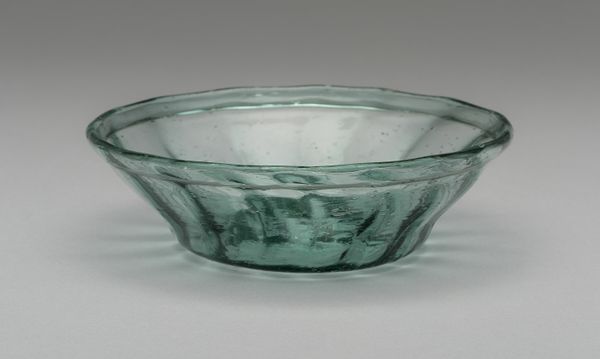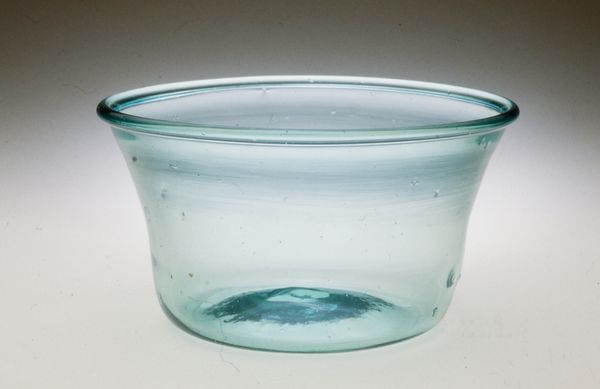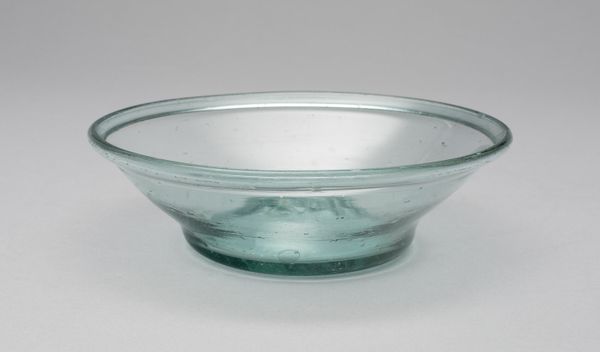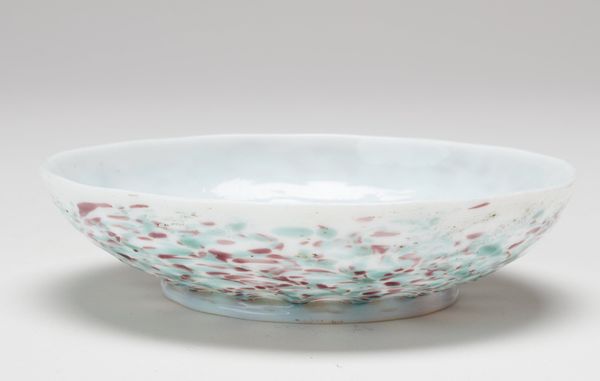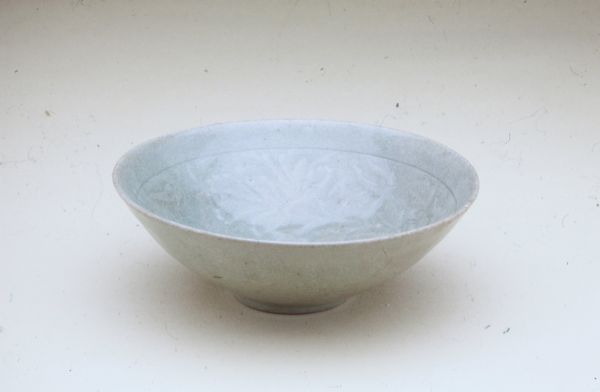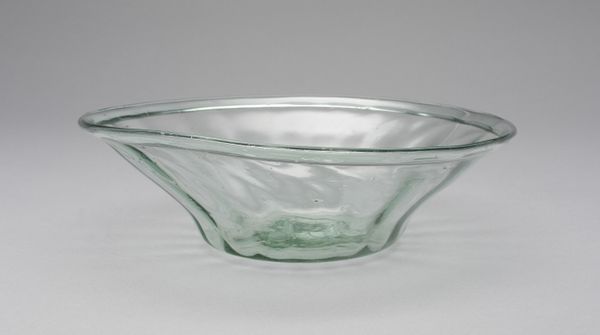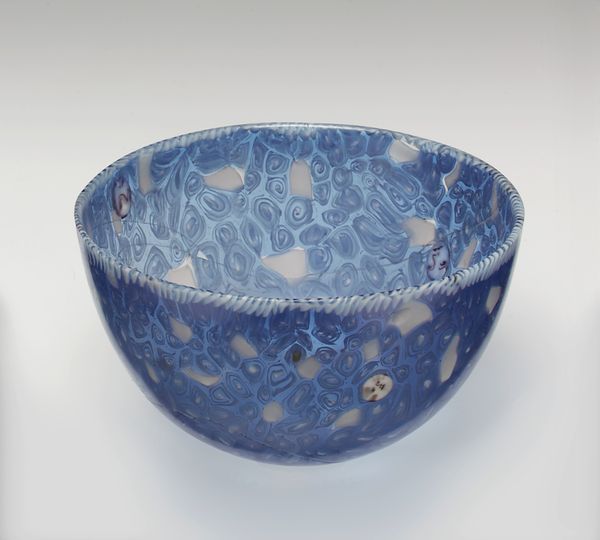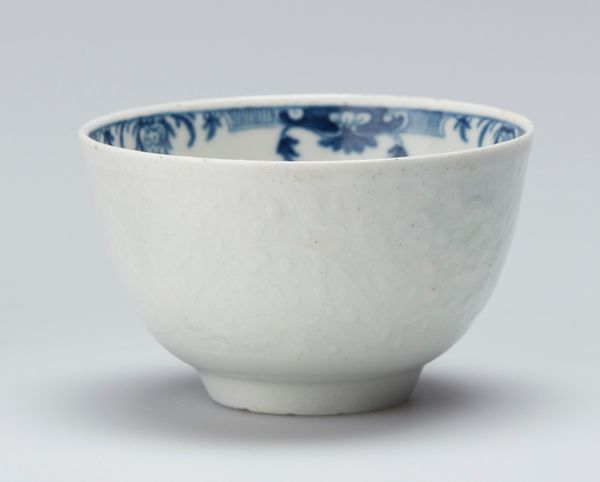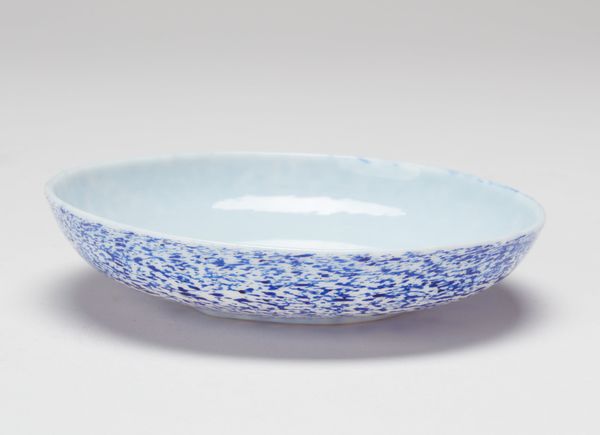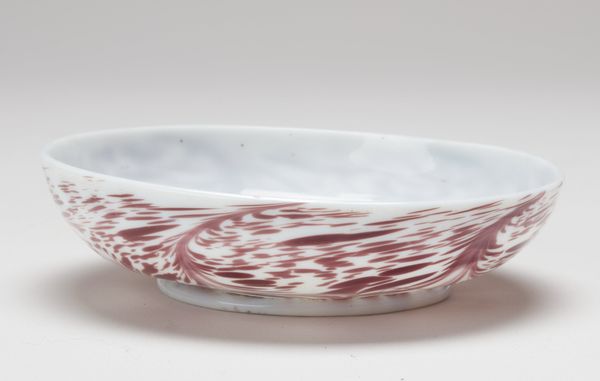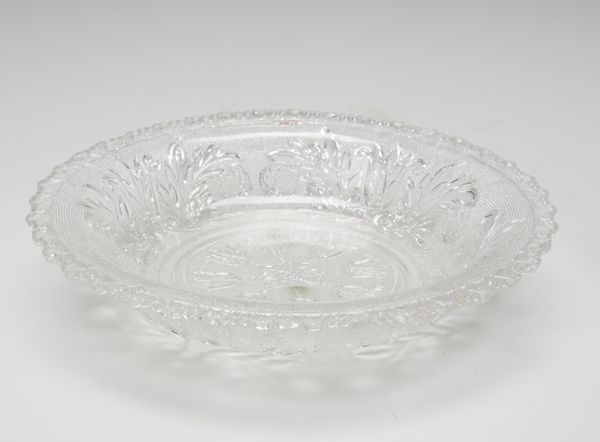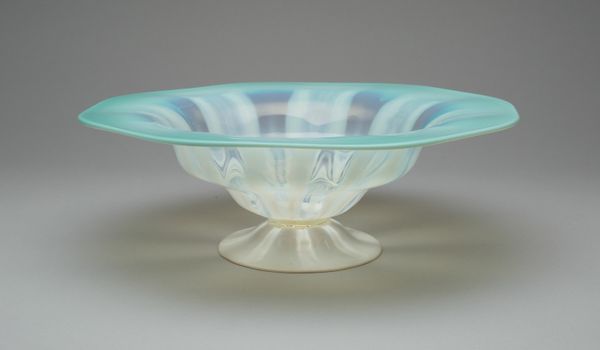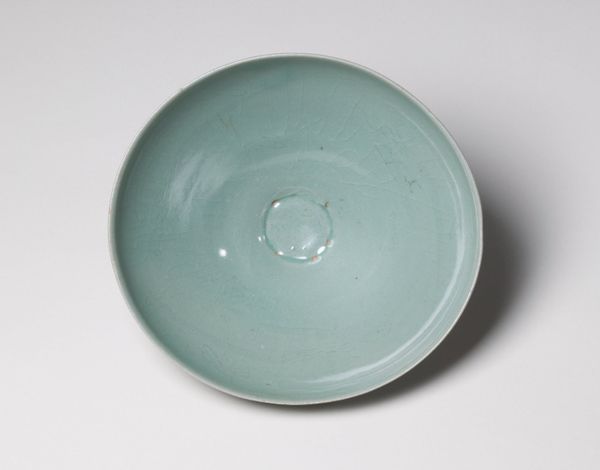
glass
#
glass
#
decorative-art
Dimensions: 1 5/8 x 5 1/2 x 5 1/2 in. (4.1 x 13.97 x 13.97 cm)
Copyright: Public Domain
Editor: We’re looking at a “Sweetmeat Dish,” crafted by the Mantua Glass Company, around the 19th century. The delicate glass has this subtle aquamarine hue and swirling texture. It almost looks like it’s made of solidified sea water. What story do you think it holds? Curator: Indeed, its translucence immediately makes me think of water, linking it back to the elemental source of glass itself - sand, melted by fire, often near ancient shores. In many cultures, water symbolizes purification and transformation. Consider that a sweetmeat dish held treats, items once precious and perhaps even medicinal. So, in effect, the vessel holds something meant to purify or sweeten the soul. Does that association ring true for you? Editor: That’s fascinating, I never thought about the vessel itself adding to the experience. So, it is not just about the utility? Curator: Exactly! The very act of creating decorative art elevates daily life into a shared aesthetic and cultural language. And in the 19th century, growing industrialization made decorative pieces like this more accessible, indicating evolving societal values. Glass, even mass-produced, continued to symbolize fragility and beauty, things worth protecting. Now, how does knowing that influence your reading? Editor: It changes everything! I thought it was just a pretty bowl, but it’s so much more about connecting to deeper cultural meanings of preciousness and purity. Curator: Precisely. A seemingly simple object echoes our shared history and psychological connections. By seeing through the glass, we are reminded about cultural memory, where even a little sweetmeat dish speaks volumes. Editor: It really makes you appreciate the depth an object like this carries within it! Thank you.
Comments
No comments
Be the first to comment and join the conversation on the ultimate creative platform.
